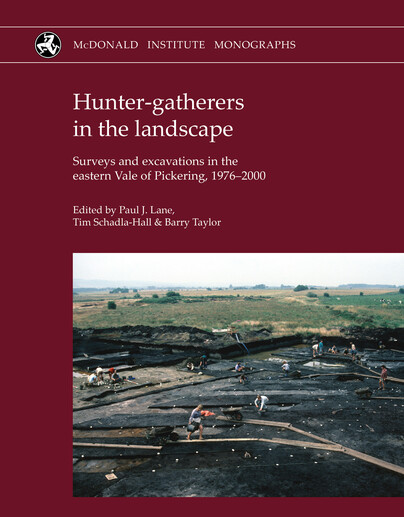
Format: Hardback
Pages: 432
ISBN: 9781913344207
Pub Date: July 2025
Price:
£52.00
In stock
Description:
This monograph presents the results of over twenty-five years of archaeological and palaeoenvironmental research on the Late Glacial (Late Upper Palaeolithic) and Early Holocene (Mesolithic) landscape of the palaeo-Lake Flixton in the eastern Vale of Pickering, North Yorkshire. Initially conceived as a rescue project focused on Seamer Carr, an area of land lying a few kilometres northwest of the well-known Early Mesolithic site of Star Carr, the project ultimately developed into a much wider study of the early prehistoric occupation of the former lake and its environs. By the time the project concluded it had successfully mapped much of the former lake and developed a detailed account of both the human and environmental histories of this landscape. While some elements of this research have been published previously, this volume represents the definitive report on the results of the project, and the research strategies employed to investigate an entire landscape buried beneath peat deposits, and with little visible evidence for human activity on the modern ground surface. The data produced by the project, brought together in this volume, provides an unparalleled analysis of the changing nature of Late Upper Palaeolithic and Mesolithic settlement in lowland northern England and helps place the extensively excavated site of Star Carr in its wider landscape context. The financial support provided over the course of over four decades of fieldwork and post-excavation activities by Historic England (and its previous iterations as English Heritage and the Ancient Monuments section of the Department of the Environment), North Yorkshire County Council, the Leverhulme Trust and a host of additional sponsors of the Vale of Pickering Research Trust (VPRT) is gratefully acknowledged. As is the generosity, logistical support, contributions and patience of the numerous landowners, VPRT trustees and fieldwork supervisors and volunteers over the years, without which this work would have been impossible.

